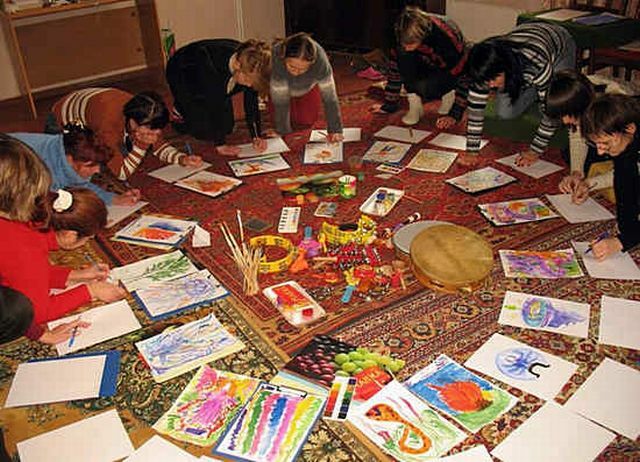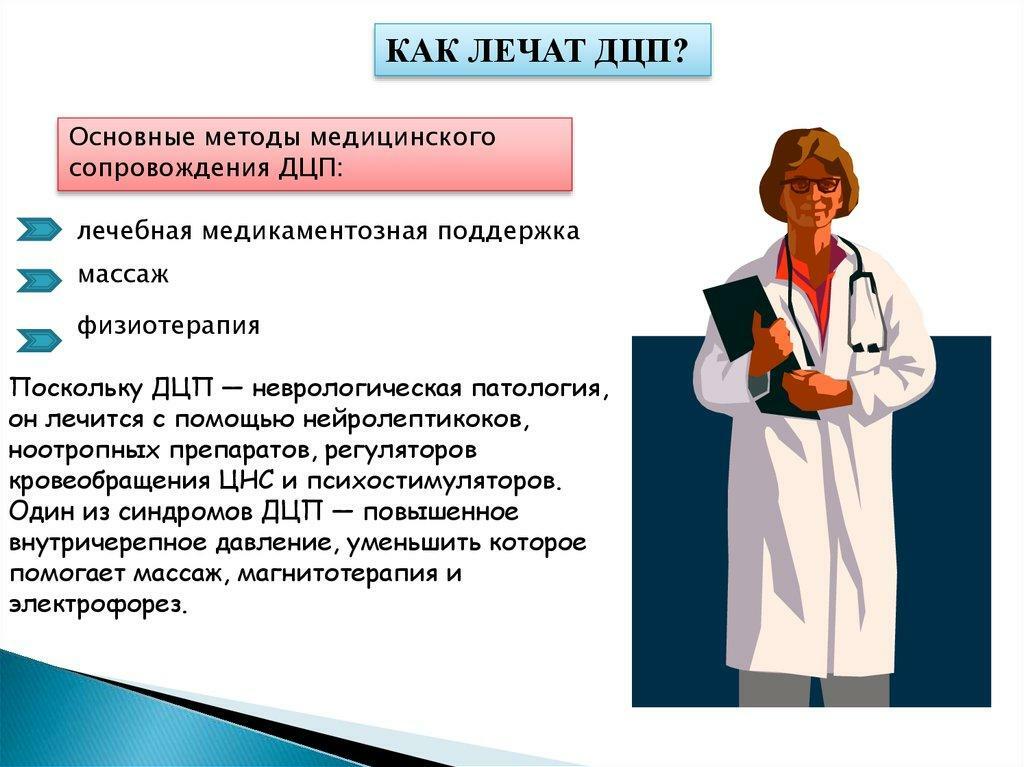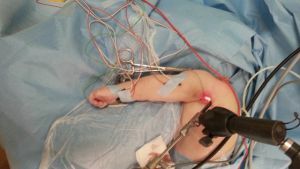 For the treatment of nerve stretching or partial damage caused by various injuries, neurolisis is prescribed.
For the treatment of nerve stretching or partial damage caused by various injuries, neurolisis is prescribed.
Neurolysis is a surgical procedure, during which the disturbed conduction of nerves is restored, freeing them from compression adhesions, tissues, scars.
A procedure is performed under local or general anesthesia using a microscope and special microsurgical instruments.
After removing nerve-blocking structures, as well as its release from adhesions and scarring, the nerve column is checked for electrical excitability.
If any irregularities occur, the work of the affected areas is resumed, and then the nerve trunk is placed between the muscles in a specially prepared protected area. At the end of the operation, the wound is sutured, the limb is immobilized for 2-3 weeks. Special physiotherapy procedures and physiotherapy exercises are prescribed.
In the rehabilitation period are appointed: massage, reflexotherapy, physiotherapy procedures, therapeutic exercise. The latter assists in restoring muscular activity.

Variation of procedure
The procedure is carried out by the following methods:
- external( external);
- internal( internally).
The external neurolysis is usually carried out: with the help of a scalpel, the surgeon performs excision of the connective formations that squeeze the nerve. It is prescribed in cases where scarring has arisen in the surrounding tissues.

Outer neurolysis of the ulnar nerve
However, in some special cases, internal neurolisis is also prescribed: when the connective structures are located between the bundles and pass through the nerve trunk.
This procedure is considered a very complex operation, which must be performed in a timely manner, because a prolonged infringement of the neural post can lead to limb paralysis.
Indications for procedure
This surgical intervention is prescribed for any lesions of the peripheral nerves in order to preserve its anatomical integrity.
Indications for this surgical intervention are as follows:
- traumatic sprains of nerve trunks;
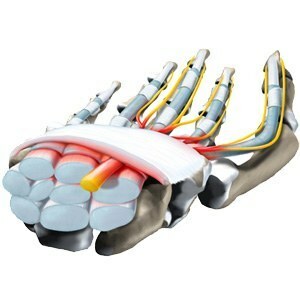
- carpal syndrome;
- deep location of the ulnar nerve branch;
- traumatic aneurysms with involved nerves;
- combined injuries of nerve and bone.
Now this operation was used for pseudoneuromas, injuries of the brachial plexus, partial lesions of nerves, various damages of the nerves of the finger branches, after an unsuccessful nerve seam.
Neurolysis is performed to restore the functions of the peripheral nerves in such cases:
- damage to the radial nerve causing the "hanging brush" syndrome;
- lesions of the popliteal nerve, proceeding with pronounced impairments of sensory ability;
- injuries of the ulnar nerve, leading to impaired motor function;
- pinch of the sciatic nerve, causing pain and inability to move normally;
- lesions of the peroneal nerve characterized by paralysis of the extensor of the foot, fingers and muscle, which ensure its turn outward;
- disorders in the region of the tibial nerve, which causes paralysis of the flexor of the foot, fingers and tibial muscles, which ensure its rotation inside.
Initial inspection
Having felt certain ailments it is recommended to contact the clinic for assistance. To prescribe a treatment the doctor must find out the root cause of any problems and collect an anamnesis.
To do this, he can assign the following types of diagnostics:
- computer and magnetic resonance imaging;
- X-ray of the relevant organs and sites;
- check for the ability to excite;
- certain tests on the sensitivity and ability of the joints to perform some motor functions.
When choosing a method of treatment, the doctor takes into account the following factors:
- the timing of the injury;
- character of the damage;
- previous operations;
- degree of tissue scarring;
- level of nerve damage.
The specialist also assesses the presence of concomitant pathologies.
Technique for conducting
 Internal neurolysis is performed under anesthesia. Scalpel along the entire length of the nerve is longitudinally opened by the fibrous connective tissue that unites the nerve bundles.
Internal neurolysis is performed under anesthesia. Scalpel along the entire length of the nerve is longitudinally opened by the fibrous connective tissue that unites the nerve bundles.
Then gently find individual bundles of fibers and cut the scars between them, thereby providing access to the nerve. The nerve is secreted from the tissues slightly below and above the level of damage, palpation is performed to determine the scarring zone and the scar is removed.
To avoid damage to nearby vessels and branches, excision is performed strictly above the nerve, but not on the sides. After that, 2-3 thin seams are superimposed on the fabric. The nerve is immersed in a new muscle bed.
After elimination of compression, sensitivity is normalized and soreness disappears. Both before the operation, and after it, mud therapy, electrostimulation and physiotherapy, the use of neurostimulators are recommended.
The technique of external neurosis is a bit like holding an internal one. The essence of the operation is as follows: after the nerve column is released from the surrounding tissue, longitudinal sections of connective tissue are produced from two sides.
Each bundle of nerves is excreted by the tracheotomy hook and is released from the scars with sharp( using tools), or bluntly( with the help of fingers).
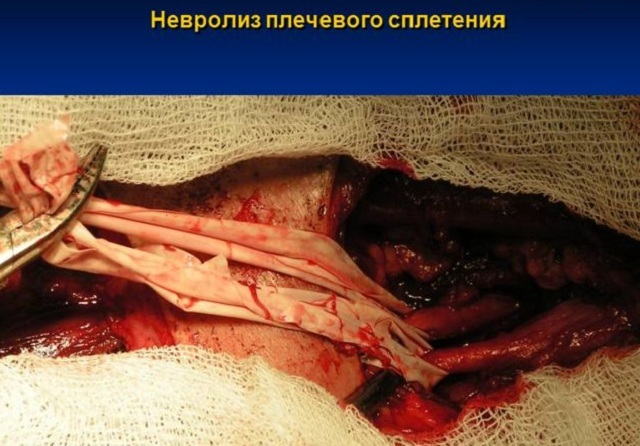

Recovery stage
Immediately after the operation, pain disappears and sensitivity is restored. This condition is explained by the disposal of compression of intact axons. Further recovery of lost functions is slower. This is explained by repeated remyelination and growth of axons.
For effective and rapid treatment, as well as a short recovery period, it is recommended to perform the operation at an early stage, when the nerve compression is not very deep, and the process of degeneration is reversible.
The effectiveness of the operation performed in a timely and accurate manner is manifested in a short time:
- there is an improvement or complete restoration of the functionality of the affected nerve;
- vegetative-trophic pathology and soreness disappear;
- returns sensitivity;
- normalizes sweating.
Price "fork"
Neurolysis refers to the microsurgical type of surgical intervention, in which the nerve of the scar tissue is released.
The cost of the procedure is negotiated during the patient's consultation with the doctor and can fluctuate significantly. This takes into account the severity of the  pathological process, the presence of concomitant pathologies and complications, the type of planned operation and the length of stay in the medical institution.
pathological process, the presence of concomitant pathologies and complications, the type of planned operation and the length of stay in the medical institution.
In each city there are a number of clinics that offer this procedure at various prices. In Moscow, for example, more than 30 medical institutions. The average price of an operation in the capital is 50000r, so the cost of neurolysis of the radial nerve at shoulder level ranges from 20500 to 135000r, and the intervention at the level of the brush will cost in the amount of 6500 to 128000r.
In St. Petersburg, about 10 clinics offer their services, with an average cost of 25,000 rub. The cost of surgery on the radial nerve ranges from 10,000 to 39,000 r., And neurolisis of the sciatic nerve will cost from 10,000 to 66,000 r.
Timely access to a doctor in most cases allows to completely restore the conductivity of the nerve. Experienced doctors, modern equipment and innovative diagnostic methods will help to quickly and effectively get rid of diseases of peripheral nerves.


